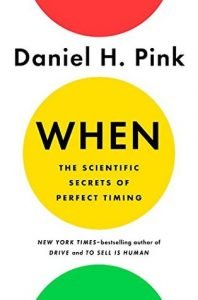The author laments that there are too many “how-to” books in the marketplace, so instead he exalts us to think of this book as a new genre altogether – a “when-to” book: when to change careers, deliver bad news, schedule a class, end a marriage, go for a run, or get serious about a project or a person.
The book is well organised and well thought-out, as evidence from the flow of the topics in each part (there are three), with a useful “Time Hacker’s Handbook” at the end of each chapter. Be sure to check out the ultimate guide on when to exercise as well as the four tips for a better morning in the first chapter of the “Time Hacker’s Handbook”. These alone are well worth learning about the science of timing.
The author says that timing wasn’t everything, but it was a big thing, at least when it comes to standardised test. He cites research that suggests students scored higher in the mornings than in the afternoons. That doesn’t mean schools have to move all tests to the morning (which would be impractical). Instead, researchers discovered another remedy that is easier to implement: restorative breaks.
Based on research, it appears that test scores go up by a higher amount after breaks. In fact, taking a test in the afternoon without a break produces scores that are equivalent to spending less time in school each year and having parents with lower incomes and less education. But taking the same test after a 20 to 30-min break leads to scores that are equivalent to students spending three additional weeks in the classroom and having somewhat wealthier and better-educated parents.
In the same vein, the author makes a similar case for adults by way of taking naps. Be sure to follow up on the tips in chapter 2 of the “Time Hacker’s Handbook”.
If you don’t realise by now, this is actually a how-to book about when.
The story of the Mumbai dahbhawalas in part three will blow your mind. Five years and zero misdelivered lunch. Beat that, foodpanda, Deliveroo, GrabFood and whatever.
There are plenty of notes at the back of the book, but I’m a lazy reader with a failing eyesight so I skipped most of that section.

